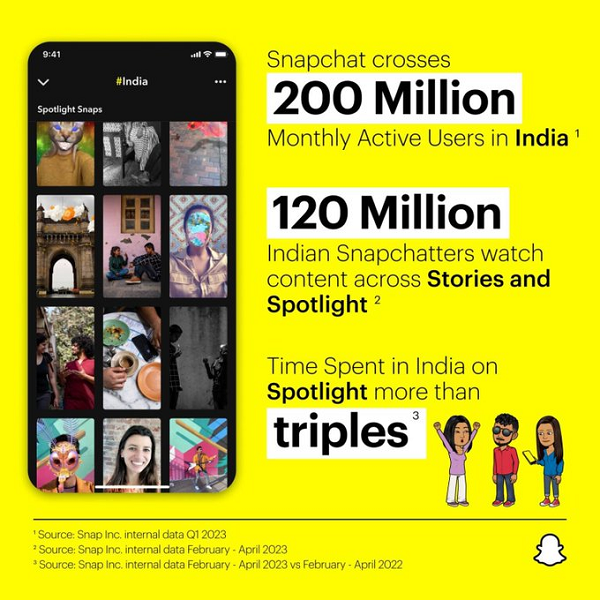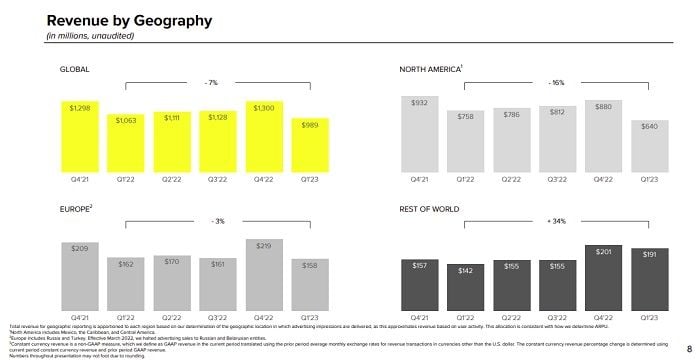India has solidified its position as Snapchat’s top market, with the company reporting that it now serves over 200 million Indian users every month.

Which means that some 27% of Snap’s entire user base is now based in the Indian region. Snapchat has 100 million daily active users in North America, and 93 million DAU in Europe, with India making up the majority of its remaining usage.
And while daily and monthly usage stats are not directly comparable, at 383 million DAU, and over 750 million total MAU, extrapolation of the available data would suggest that Snap has around:
- 190 million MAU in North America
- 180 million MAU in EU (including 21 million MAU in the UK)
- Around 380 million in other regions
India, of course, makes up the biggest chunk, and it’s been interesting to note the rise of Snap in the Indian region, particularly after India’s decision to ban TikTok in 2020.
Instagram is seemingly the platform that benefitted most from TikTok’s removal in the region, with YouTube also seeing a solid increase. TikTok reportedly had over 200 million Indian users at the time it was banned, and that crowd of users has since fragmented off into various new places, with Snap also gathering up cast-offs, and enhancing connection with Indian users, as connective capacity in the Indian market increases.
Snap has also benefited from the reformation of its Android app, with Android being the most popular OS, by far, in the Indian region.
Snapchat had long resisted updating its Android app, with a former Snap employee saying that Snap chief Evan Spiegel deliberately sought to exclude India, and other developing markets, due to a perceived lack of revenue potential.
According to a lawsuit filed in 2017, when the issue of slow international adoption was raised at an internal Snap meeting, Spiegel explained that ‘this app is only for rich people. I don’t want to expand into poor countries like India and Spain’. Spiegel has denied that this exchange ever happened, but even so, the essence of Spiegel’s reported stance was evident in its resistance to update its Android UX, which effectively made Snap far less accessible for people on lower-quality devices, or with limited data plans.
Snap finally updated its Android app in 2019, and since then Snap’s gone from strength to strength in the Indian market – though it’s still a long way from the US in terms of revenue intake.

But it is improving, and as digital connectivity becomes more engrained in Indian society, Snap now stands to benefit from enhanced in-stream interaction, including shopping, product discovery and more.
Snap says that more than 120 Million Indian Snapchatters now also watch content across Stories and Spotlight each month, while time spent in India on Spotlight has more than tripled since launch.
“The use and creation of Augmented Reality has also resonated with Indian Snapchatters, who often utilise Snapchat AR to celebrate cultural moments. In India, Snapchatters play with Augmented Reality Lenses over 50 billion times every month, and over 85% of Snapchatters use Lenses to visually express themselves during festive months in India.”
India remains a key growth focus for all social apps, and Snapchat’s relative strength in the market bodes well for its future potential, as the Indian digital economy continues to expand, and facilitate all new types of opportunities.
Along with Meta and Google, Snap could also win out in this respect. Eventually, pending regulatory approval, the hope is the digital platforms will form the core of all Indian commerce activity, and Snap’s presence could ensure that it benefits from such, if it does come to fruition.



